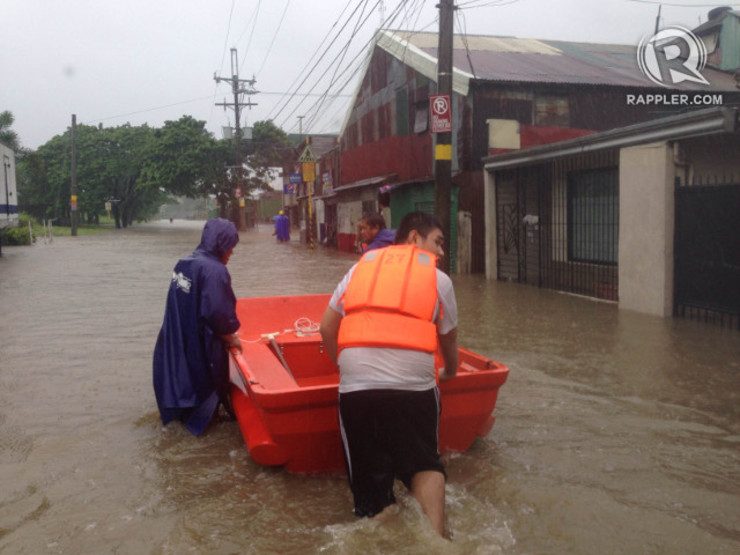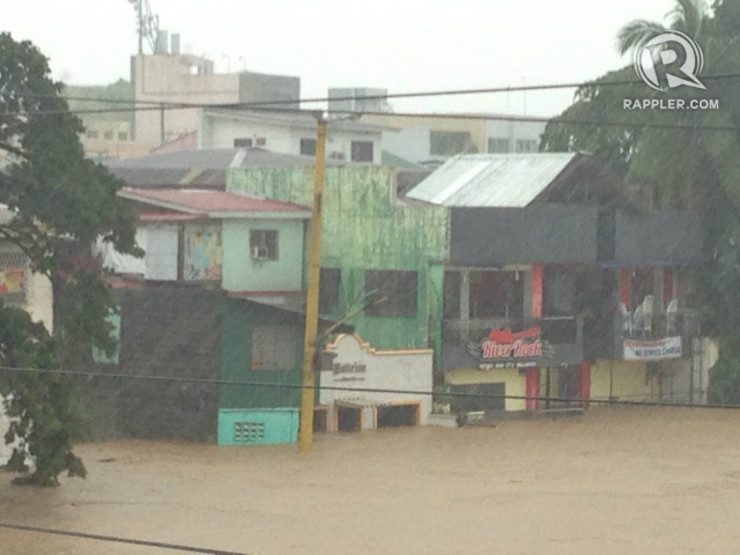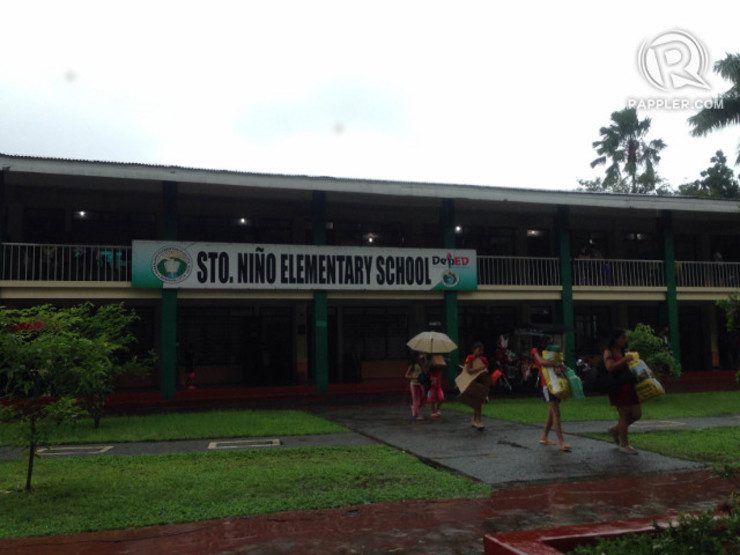SUMMARY
This is AI generated summarization, which may have errors. For context, always refer to the full article.

MANILA, Philippines – In Barangay Santo Niño, Marikina City, non-stop rain covers everything in curtains of white while floods submerge the first floors of buildings, but officials say it’s nothing the city can’t handle.
Though Tropical Storm Mario (Fung-Wong) has been compared to Tropical Storm Ondoy (Ketsana) of 2009, the residents were more ready for it this time around.
“Every year, we have become more experienced,” Sto Niño village councilor (kagawad) Romina de Guzman told Rappler in Filipino.
“We have become more organized. The residents have learned what to do. There are only a few who don’t follow so it was easier,” she added.
At 1 pm on Friday, September 19, Marikina River had reached 19.9 meters, its highest since breaching critical level. At around 2 pm, water levels began to subside.
Flooding has led to the evacuation of more than 25,500 people to 23 evacuation centers all over the city as of 3:40 pm, Friday.
Marikina was among the hardest hit cities during Ondoy, with 70 casualties, most of whom drowned, and more than P27 million (US$605,000) worth of damage.
But as of posting, no casualties had been reported in the city due to Mario.

In Barangay Santo Niño, evacuation went smoothly, save for the stubborn few who refused to leave their homes. The village’s designated evacuation center, Sto Niño Elementary School, now shelters more than 1,700 people.
“It’s much easier now because the people know what to do. We have an evacuation center in every barangay. When the water reaches 16 meters, big groups evacuate voluntarily,” village taskforce member Sharmaine Navarro told Rappler in Filipino.
Rescue operations
Things are tougher for rescue volunteers, who say they have yet to forcibly evacuate 600 people living in severely-flooded areas.
Four volunteers in blue raincoats tug two orange rescue boats through waist-high floods to check up on residents who refuse to evacuate despite the onslaught of Tropical Storm Mario.
“These are old residents. They are so used to floods,” said Al Ampater, who has been part of flood rescue operations in Marikina since 2002.
The non-stop rain reminded the rescue team of Ondoy. But thankfully, the floods were not as high, said Ampater.
For instance, the waist-deep floods in Nile Subdivision inside the barangay submerged the first floors of houses during Ondoy, he said. And in many areas, Mario’s flood levels lowered quickly, rendering some roads passable.
The team, one of 11 deployed with other rescue boats, passed through flooded houses asking residents if they are okay, if they wanted to evacuate, if they had enough food.
But desperation was far from the minds of the residents. Some were found drinking underneath an umbrella covered table, offering shots to rescue volunteers. Kids were playing volleyball despite being knee-deep in flood waters.
Those with shops below their houses kept their businesses open. Dogs barked from the tops of tables where their masters put them.
“Sanay na mga tao (The people are used to it),” said Marikina resident Joseph. Mario is the second storm in 2014 during which people had to evacuate, the first being Typhoon Glenda.
Other worries
Those who stay in their homes despite calls for evacuation by the city government usually do so because of overconfidence, born from years of living in the area, said Bian Mendoza, another rescue volunteer.
“They think they can tell how fast the water will rise depending on the rainfall,” he told Rappler.
Many times, the women and children go ahead to the evacuation centers while the fathers stay in the house to guard their property, said Ampater.
Their fear is real because unscrupulous characters have been known to take advantage of the calamity to steal from abandoned homes, he said.

Aside from rescue operations, the worry now is to provide for the basic needs of evacuees.
While the Marikina City government still has enough snacks and water for the day, they need the Department of Social Welfare and Development to send in food to last until Sunday, said De Guzman.
Even if the storm leaves on Saturday, people are expected to spend another day cleaning up their houses before moving in, she said.
Though Mario is not yet through with Marikina, De Guzman hopes they have already been through the worst.
“Kasi naalala namin kung gaano kahirap yung na-experience namin nun. Ayaw na namin maulit. Medyo malakas loob namin kasi naranasan na nga namin yung worst so paano pa kaya kung mga ganitong bagyo pa lang.“
(Because we remember the difficulty we experienced then. We don’t want it to happen again. We are more confident now because we experienced the worst so what more if it’s only this kind of storm.) – Rappler.com
Follow Rappler’s live blog for more information, photos, and videos from areas affected by Typhoon #MarioPH (Fung-Wong).
Stay alert and ready with the latest weather and disaster information through Project Agos.
Add a comment
How does this make you feel?
There are no comments yet. Add your comment to start the conversation.